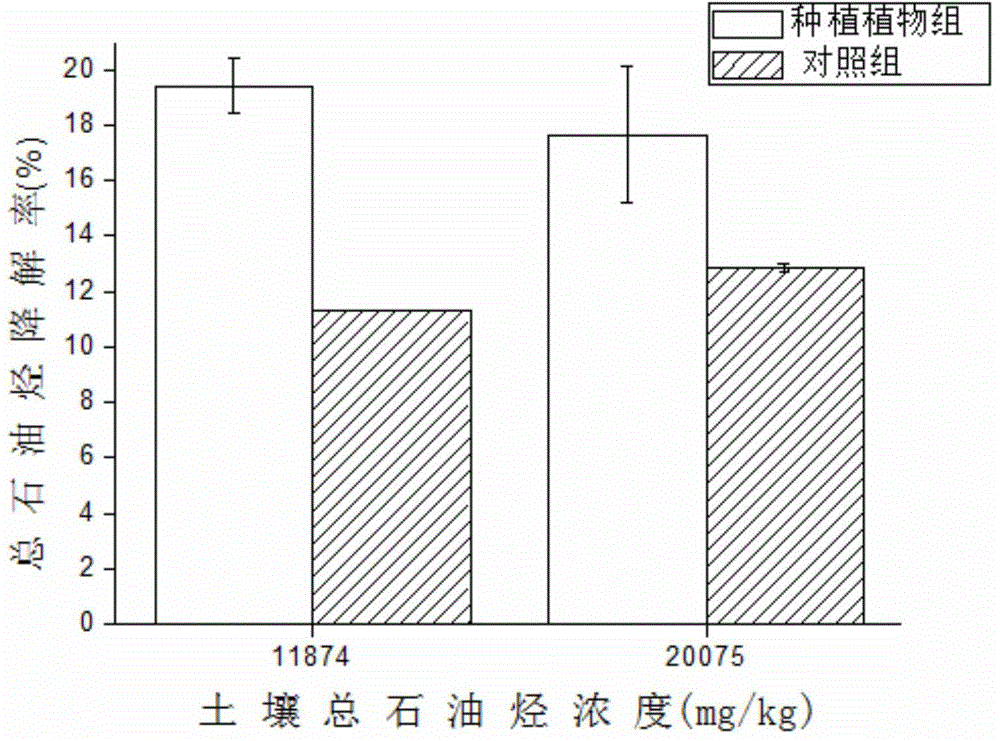A method of remediating oil-contaminated soil by using wild ornamental plant Iris wild
A technology for ornamental plants and polluted soil, applied in the field of environmental remediation, can solve the problems of shortening phytoremediation time, long remediation cycle, shortening plant growth time, etc., to improve soil degradation and productivity decline, short remediation time, and increase biodiversity Effect
Active Publication Date: 2015-09-02
NANKAI UNIV
View PDF3 Cites 0 Cited by
- Summary
- Abstract
- Description
- Claims
- Application Information
AI Technical Summary
Problems solved by technology
More importantly, wild ornamental plants can often be planted directly through seedlings, shortening the growth time of plants from seeds to seedlings, and ultimately achieving the purpose of shortening the time for phytoremediation and overcoming the disadvantages of long phytoremediation cycles
Method used
the structure of the environmentally friendly knitted fabric provided by the present invention; figure 2 Flow chart of the yarn wrapping machine for environmentally friendly knitted fabrics and storage devices; image 3 Is the parameter map of the yarn covering machine
View moreImage
Smart Image Click on the blue labels to locate them in the text.
Smart ImageViewing Examples
Examples
Experimental program
Comparison scheme
Effect test
Embodiment
[0014] A method for repairing oil-contaminated soil by using the wild ornamental plant Iris wild, the steps are as follows:
the structure of the environmentally friendly knitted fabric provided by the present invention; figure 2 Flow chart of the yarn wrapping machine for environmentally friendly knitted fabrics and storage devices; image 3 Is the parameter map of the yarn covering machine
Login to View More PUM
 Login to View More
Login to View More Abstract
The invention discloses a method for restoring petroleum-polluted soil by the utilization of a wild ornamental plant wild iris. The method comprises the following steps: 1) potting in a greenhouse or direct plantation in a land for growing field crops: by a seedling transplant method, wild iris is planted in soil polluted by petroleum hydrocarbon with the concentration of less than 20g / kg; and the wild iris is watered once regularly at 8 am every day so as to make water-holding capacity of the soil maintain at 60% of the maximum water-holding capacity; and 2) when wild iris grows to the flowering stage or maturation stage, the whole plant is moved away from the polluted soil or the part of the plant above the ground is moved away from the polluted soil; when the wild iris root system grows a next crop of plant, the above restoration process is repeated until the content of petroleum hydrocarbon in the soil reaches the national environment standard or ecological safety level. The method has advantages as follows: investment in the restoration method is little; management pattern is extensive and simple; work amount is small; technical requirements are not high; restoration time is short; secondary pollution is not caused; and it is conducive to improve soil degradation caused by petroleum hydrocarbon pollution and recover and raise biodiversity.
Description
technical field [0001] The invention relates to an environment restoration technology of organic polluted soil, in particular to a method for repairing oil-polluted soil by using a wild ornamental plant iris japonica. Background technique [0002] The rapid development of the oil industry has brought many environmental problems. In the process of oil exploitation, storage, refining, processing, use and transportation, due to the spillage and discharge of petroleum hydrocarbons, the discharge and irrigation of oily wastewater, the ground crude oil produced in the process of oil exploitation, the volatilization and sedimentation discharge of various petroleum products, etc. It has caused a series of soil oil pollution problems, see literature 1): Phillips Lori A., Greer Charles W., Farrell R.E. et al. 2009. Field-scale assessment of weathered hydrocarbon degradation by mixed and single plant treatments[J].Applied Soil Ecology, 42(1):9-17. According to reports, the ground oil...
Claims
the structure of the environmentally friendly knitted fabric provided by the present invention; figure 2 Flow chart of the yarn wrapping machine for environmentally friendly knitted fabrics and storage devices; image 3 Is the parameter map of the yarn covering machine
Login to View More Application Information
Patent Timeline
 Login to View More
Login to View More Patent Type & Authority Patents(China)
IPC IPC(8): B09C1/00B09C1/10
Inventor 程立娟周启星
Owner NANKAI UNIV
Features
- R&D
- Intellectual Property
- Life Sciences
- Materials
- Tech Scout
Why Patsnap Eureka
- Unparalleled Data Quality
- Higher Quality Content
- 60% Fewer Hallucinations
Social media
Patsnap Eureka Blog
Learn More Browse by: Latest US Patents, China's latest patents, Technical Efficacy Thesaurus, Application Domain, Technology Topic, Popular Technical Reports.
© 2025 PatSnap. All rights reserved.Legal|Privacy policy|Modern Slavery Act Transparency Statement|Sitemap|About US| Contact US: help@patsnap.com


